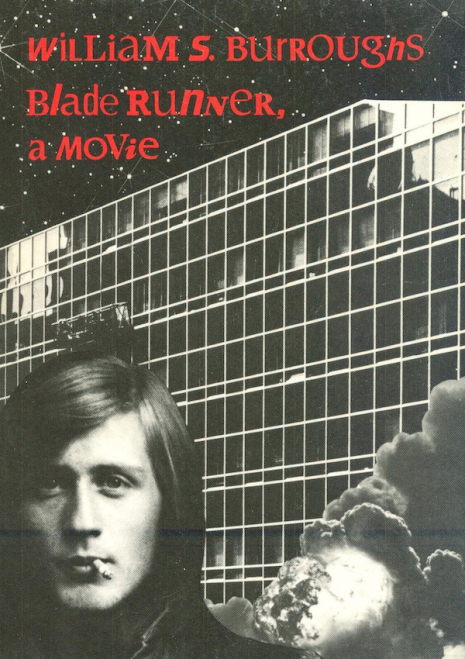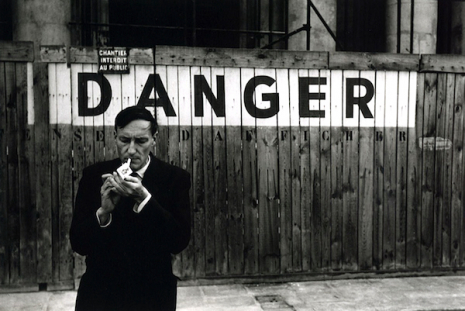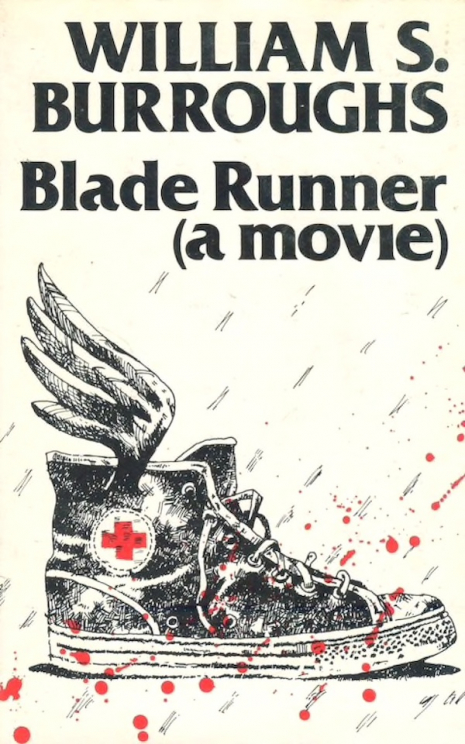
1879: Doctor Benway is addressing a crowd of cowboys in the arid deserts of Nevada.
‘“Now, boys, lissen-up, I have two things for sale today. One a book by some fella named Burroughs, but that won’t really innarest you. The other, the most important thing, is a Quantum Vibrating Egg, which I have especially devised for you lonesome cowboys out on the plains.”
“Whatsitdo?”
“What does it do? You may very well ask. Now this here Quantum Vibrating Egg will lead you to undreamed of pleasures. Sensual delights unimaginable. Each egg when carefully inserted into the anus will begin to vibrate. The device is at zero degrees and will slowly rise to the body temperature of 37 degrees c. As the Egg’s temperature increases so does its vibrating motion, if you’ll pardon the pun, which renders the victim…I mean the er..indulger in fits of unrelenting erotic ecstasy. This here Egg will provide multiple hands-free orgasms. No hands, no wood, what I like to call sissygasms, wave-upon-wave, literally hundreds of them until the individual expires in orgasmic bliss…”
“...Tell us about the book.”
“...What…?”
“Shove yer egg and tell us about the book.”
“The book…? Why does this always happen…Well, okay then…”

William S. Burroughs was an avid reader of low-rent pulp fiction. These kinda books stimulated his imagination. The poet W. H. Auden had a similar interest. He indulged in a passion for cosy murder mysteries written by the likes of Agatha Christie, Dorothy L. Sayers, and Ngaio Marsh. He even wrote several damned decent essays on the subject including “The Guilty Vicarage: Notes on the detective story, by an addict.” Now, I expect at this juncture some bright bod will notice a pattern and supply a graph showing the correlation between a liking for low-brow fiction and high intellect. It could be true, as anyone who’s read Last Words: The Final Journals of William S. Burroughs can attest, Old Bull Hubbard liked his pulpy tales of gangsters and the Mafia.
Sometime around 1974, just after Burroughs had quit London and moved into “the Bunker” a converted YMCA building in lower Manhattan, Burroughs got his long slender fingers on a copy of a science-fiction novel called The Bladerunner by Alan E. Nourse. It was a speculative tale of a future where the only way to receive medical treatment was to be sterilized to stop any further progeny polluting the world. This draconian bargain led to a blackmarket of doctors operating on patients who refused to be sterilized. The book’s main character was one Billy Gimp. He was known as the “bladerunner” because he supplied the tools of the doctor’s trade in this dark and dangerous world.

Nourse had been a medical man who turned to writing sci-fi shorts for pulp magazines like Weird Tales, Astounding Stories and alike. His biggest hit before Bladerunner was his “shock-u-rama” expose of the realities of working in a hospital called Intern which he wrote under the alias of Doctor X.
Burroughs liked the ideas in Nourse’s book but thought he could do something better. He had his amanuensis-cum-editor James Grauerholz write to his agent stating he wanted to adapt Nourse’s novel into a movie and could he sort it out for him?
Burroughs wrote a script or rather he wrote a treatment for a movie. In part, he wrote a prequel to Nourse’s story, examining the events that led to the “medical emergency” which caused doctors to demand sterilization of patients. The culprits were capitalism and big business. But Burroughs then developed his own storyline where medicine or medical aid was limited to only the rich and powerful elite. Thus eradicating the so-called “unfit” or “undesirable” from America. In other words, killing-off ethnic minorities, homosexuals, and those considered as politically transgressive.
He also turned Nourse’s characters of Billy Gimp into a gay revolutionary who indulges in some full-on sex; and made Doc into an aggressive and vituperative medical man—not too far from Naked Lunch‘s Doctor Benway. In Burroughs’ tale the stories of Billy and the Doc run parallel like two separate movies being projected at the same time. Burroughs thought this as a possibility for screening—two separate screens, two separate stories, which merged when the characters of Billy and Doc met. The scripts technical difficulties were nothing compared to the violent, excessively sexual explicit content, which made Blade Runner: A Movie unfilmable. Burroughs supposedly quipped that New York would have to be leveled if anyone ever wanted to make his script into a movie.

The original hardback cover for Burroughs’ ‘Blade Runner: A Movie,’ 1979.
Burroughs’ Blade Runner: A Movie was published in a limited signed edition of 100 hardbacks by Blue Wind Press in 1979. It was then issued in paperback format the same year.
Tangerine Press are set to release three different 40th anniversary editions of Burroughs’ Blade Runner: A Movie in November. The books will come in a paperback edition; 100 numbered copies; and 26 lettered editions. The book will have an introduction by Oliver Harris. Gerard Malanga has been commissioned to supply the artwork for the covers of the paperback and the numbered editions. While Peter Blegvad will supply the artwork for the lettered edition. This is certainly something to get your hands on. Details here.
With thanks to Cherrybomb.





